Bernhard Schmauss
Delay Dispersion in IRS-assisted FSO Links
Mar 14, 2024Abstract:The line-of-sight (LOS) requirement of free-space optical (FSO) systems can be relaxed by employing optical intelligent reflecting surfaces (IRSs). In this paper, we model the impact of the IRS-induced delay dispersion and derive the channel impulse response (CIR) of IRS-assisted FSO links. The proposed model takes into account the characteristics of the incident and reflected beams' wavefronts, the position of transmitter and receiver, the size of the IRS, and the incident beamwidth on the IRS. Our simulation results reveal that a maximum effective delay spread of 0.7 ns is expected for a square IRS with area 1 $\mathrm{m}^2$, which induces inter-symbol interference for bit rates larger than 10 Gbps. We show that the IRS-induced delay dispersion can be mitigated via equalization at the receiver.
EH Modelling and Achievable Rate for FSO SWIPT Systems with Non-linear Photovoltaic Receivers
May 05, 2023Abstract:In this paper, we study optical simultaneous wireless information and power transfer (SWIPT) systems, where a photovoltaic optical receiver (RX) is illuminated by ambient light and an intensity-modulated free space optical (FSO) signal. To facilitate simultaneous information reception and energy harvesting (EH) at the RX, the received optical signal is first converted to an electrical signal, and then, its alternating current (AC) and direct current (DC) components are separated and utilized for information decoding and EH, respectively. By accurately analysing the equivalent electrical circuit of the photovoltaic RX, we model the current flow through the photovoltaic p-n junction in both the low and high input power regimes using a two-diode model of the p-n junction and we derive a closed-form non-linear EH model that characterizes the harvested power at the RX. Furthermore, taking into account the non-linear behaviour of the photovoltaic RX on information reception, we derive the optimal distribution of the transmit information signal that maximizes the achievable information rate. The proposed EH model is validated by circuit simulation results. Furthermore, we compare with two baseline models based on maximum power point (MPP) tracking at the RX and a single-diode p-n junction model, respectively, and demonstrate that in contrast to the proposed EH model, they are not able to fully capture the non-linearity of photovoltaic optical RXs. Finally, our numerical results highlight that the proposed optimal distribution of the transmit signal yields significantly higher achievable information rates compared to uniformly distributed transmit signals, which are optimal for linear optical information RXs.
Modeling and Design of IRS-Assisted Multi-Link FSO Systems
Jul 31, 2021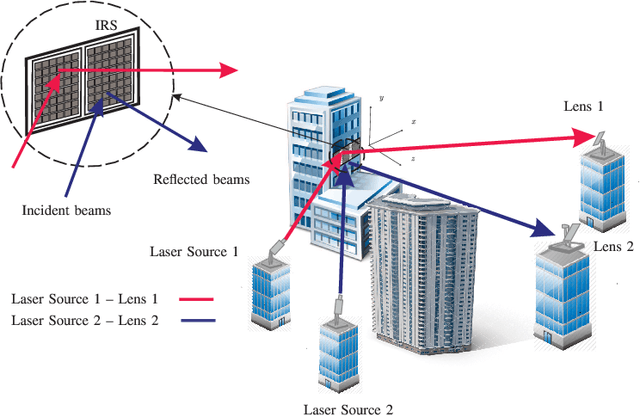
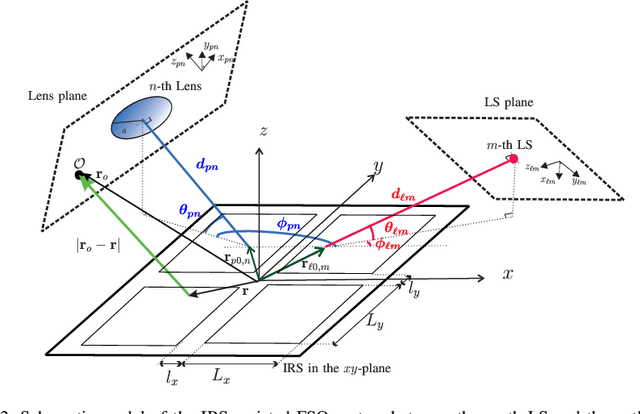

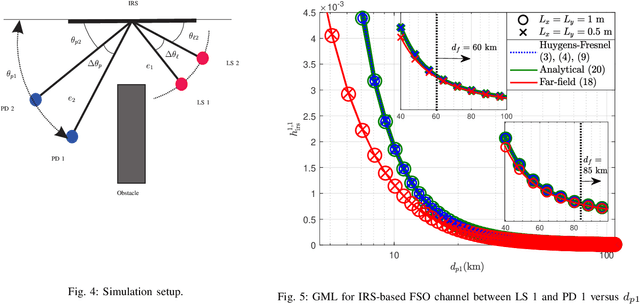
Abstract:In this paper, we investigate the modeling and design of intelligent reflecting surface (IRS)-assisted optical communication systems which are deployed to relax the line-of-sight (LOS) requirement in multi-link free space optical (FSO) systems. The FSO laser beams incident on the optical IRSs have a Gaussian power intensity profile and a nonlinear phase profile, whereas the plane waves in radio frequency (RF) systems have a uniform power intensity profile and a linear phase profile. Given these substantial differences, the results available for IRS-assisted RF systems are not applicable to IRS-assisted FSO systems. Therefore, we develop a new analytical channel model for point-to-point IRS-assisted FSO systems based on the Huygens-Fresnel principle. Our analytical model captures the impact of the size, position, and orientation of the IRS as well as its phase shift profile on the end-to-end channel. To allow the sharing of the optical IRS by multiple FSO links, we propose three different protocols, namely the time division (TD), IRS-division (IRSD), and IRS homogenization (IRSH) protocols. The proposed protocols address the specific characteristics of FSO systems including the non-uniformity and possible misalignment of the laser beams. Furthermore, to compare the proposed IRS sharing protocols, we analyze the bit error rate (BER) and the outage probability of IRS-assisted multi-link FSO systems in the presence of inter-link interference. Our simulation results validate the accuracy of the proposed analytical channel model for IRS-assisted FSO systems and confirm that this model is applicable for both large and intermediate IRS-receiver lens distances. Moreover, in the absence of misalignment errors, the IRSD protocol outperforms the other protocols, whereas in the presence of misalignment errors, the IRSH protocol performs significantly better than the IRSD protocol.
Intelligent Reflecting Surface-assisted Free-space Optical Communications
May 13, 2021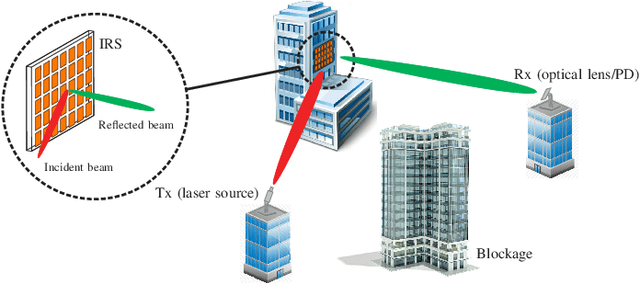
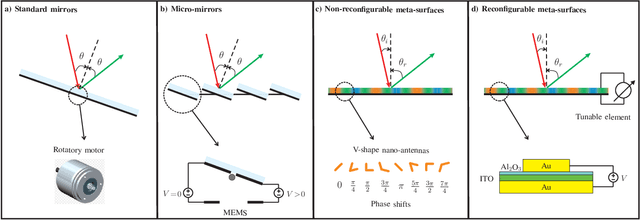
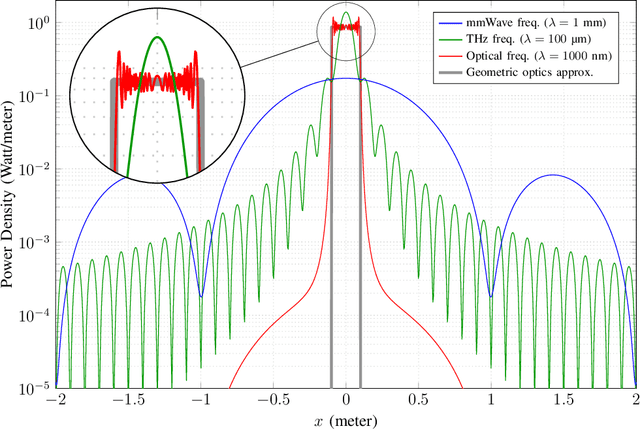
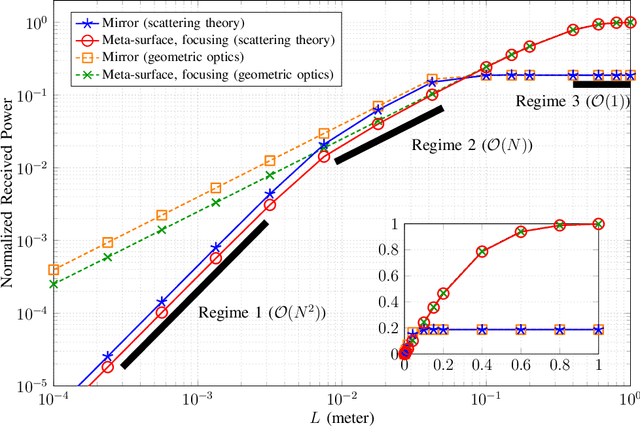
Abstract:Free-space optical (FSO) systems are able to offer the high data-rate, secure, and cost-efficient communication links required for applications such as wireless front- and backhauling for 5G and 6G communication networks. Despite the substantial advancement of FSO systems over the past decades, the requirement of a line-of-sight connection between transmitter and receiver remains a key limiting factor for their deployment. In this paper, we discuss the potential role of intelligent reflecting surfaces (IRSs) as a solution to relax this requirement. We present an overview of existing optical IRS technologies; compare optical IRSs with radio-frequency IRSs and optical relays; and identify various open problems for future research on IRS-assisted FSO communications.
 Add to Chrome
Add to Chrome Add to Firefox
Add to Firefox Add to Edge
Add to Edge